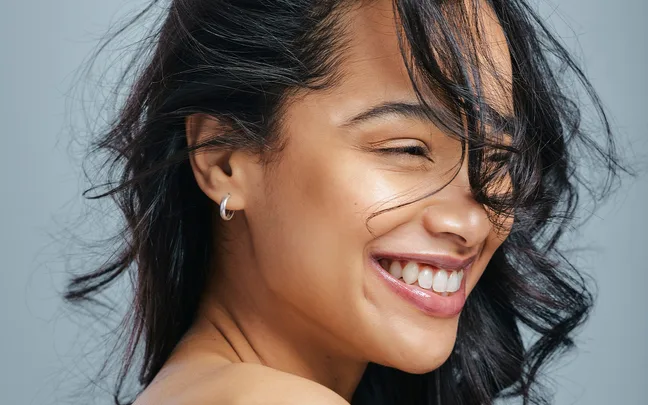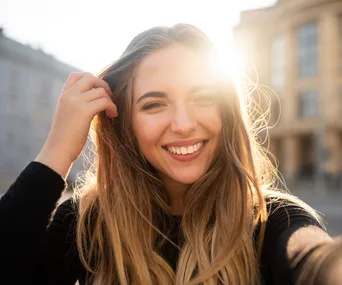Okay, what is hair cycling exactly?
The viral phenomenon known as “hair cycling” is similar to skin cycling in that it applies rest days to your routine that allow your mane to repair itself after certain products. For example, instead of using strong clarifying shampoos or deeply hydrating hair masks each time you wash your locks, you space them out throughout the week or month (duration will vary depending on the state of your hair) to give your tresses time to rest and recharge. Focused on allowing your natural hair oils to work optimally, the overall goal of hair cycling is to not over-strip or over-cleanse the hair, keeping it at its healthy best.
What are the benefits of hair cycling?
As hair cycling looks to improve the health of manes and scalps, all hair types can benefit from the social- media trend. Firstly, hair cycling reduces the risk of inflammation. Like the skin on your face, over-exfoliating or too many steps in your routine can irritate the scalp, compromising the balance of its biome and follicles. All this could lead to redness, itchiness, irritation and enhanced inflammation of the scalp.
Hair cycling also targets the specific needs of your hair at a specific time – and the more you get to know your hair through cycling, the better you’ll be able to gauge if it needs products to encourage hydration or shine, or prevent damage. For example, if you are struggling with dehydration, you can create a wash day that focuses on nourishing hair masks and leave-in conditioners to lock in moisture.
How to apply hair cyclin to your weekly routine
Although each hair-cycling routine is based around lifestyle, hair type and how often locks are cleansed, the entire process essentially uses three cycles or washes.
Cycle 1
Experts agree that the first wash should centre on detoxifying the hair. Start this cycle with a detox or clarifying shampoo to get rid of product that’s built up on hair, dulling it over time. Next, work in an ultra-hydrating mask or leave-in conditioner to restore moisture to the tresses.
TRY: Living Proof Perfect Hair Day Triple Detox Shampoo, $49,is a colour-safe formula that still effectively removes excess scalp build-up caused by pollution, products and hard water. Garnier Fructis Repairing Papaya Hair Food Mask, $14, brings damaged hair back to life, reducing breakage by an amazing 99%.
Cycle 2
The next time you wash your hair, regardless of how many days in between, use bond-building products that help repair. These types of formulas (typically in masks) restore the hydrogen bonds, replenish the protein and repair the damaged hair follicles. For those experimenting with colour or other chemical processes, bond-building should be a part of your weekly routine.
TRY: Bumble and Bumble Bond-Building Repair Styling Cream, from $33, is a multi-tasking styler designed to help strengthen hair. Toni & Guy Strength Plex Bond Repair Mask, $20, restores and mends broken bonds within the hair fibre with ease.
Cycle 3
Lastly, after shampooing, work in a volumising, smoothing or hydrating leave-in conditioning spray, or products formulated with fatty acids, antioxidants and proteins to lock in moisture and natural oils, fight frizz and repair chemical damage.
TRY: Arkive The Good Habit Hybrid Oil, $31, has a holy-grail combination of baobab and jojoba oils that give ultra-light moisture and shine to the hair, nourishing your whole head. Color Wow Kale-Infused Dream Cocktail, $56, is perfect for strengthening tresses. Living Proof Restore Repair Leave-in, $51, rehabs hair by mending damaged cuticles, smoothing strands and protecting against future damage.



